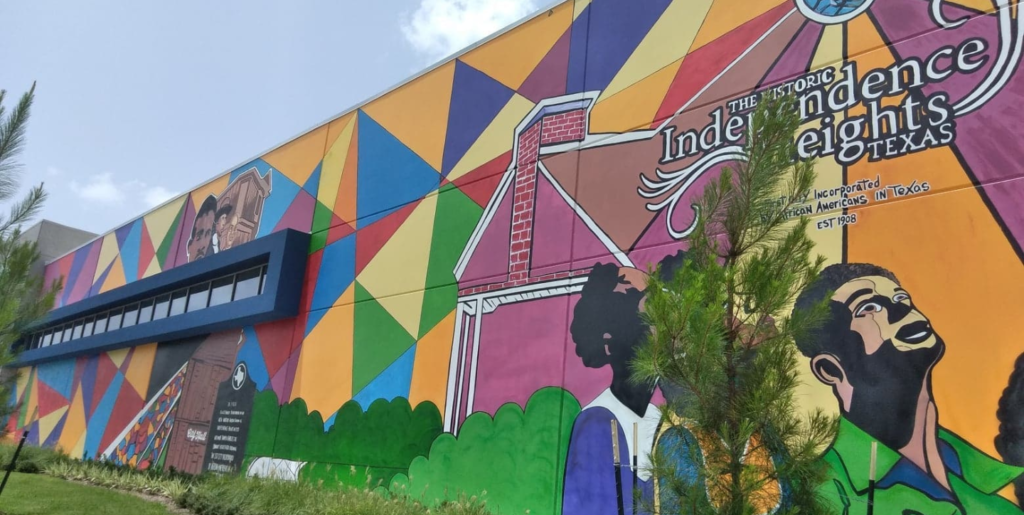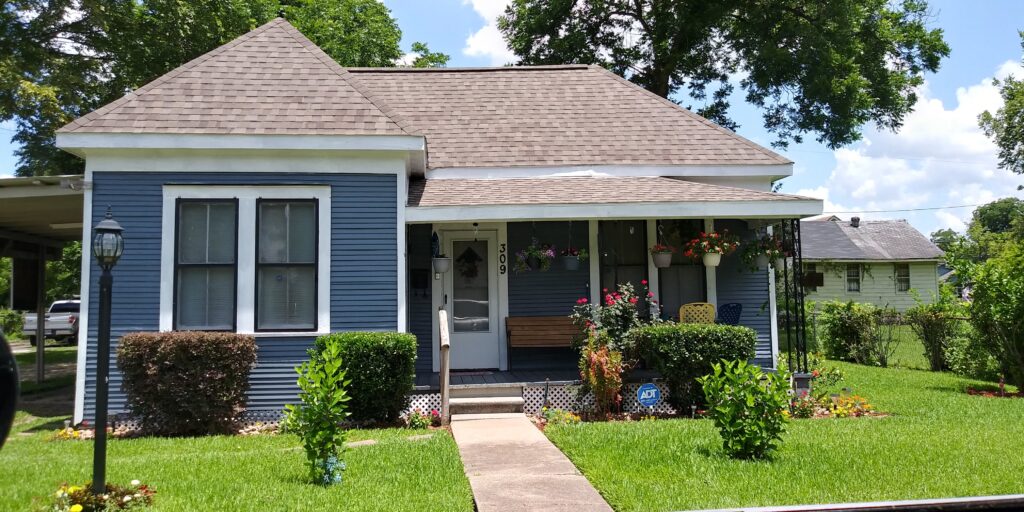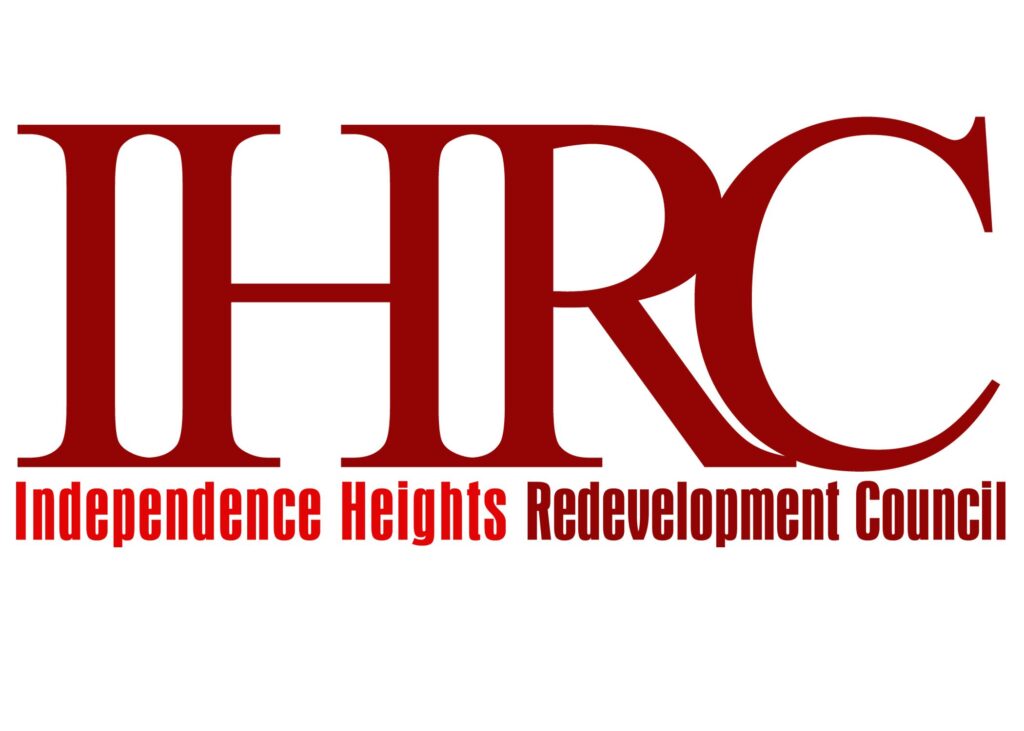By Angel Salas

For years, I drove the same route from my house near Beltway 8 and T. C. Jester to my job at the corner of Yale and Aurora Street, looking at the old houses and enjoying the original feel of the neighborhood while driving down Yale toward Loop 610. I remember the first time I saw the sign that read “Independence Heights: Historic Houston Community.” It piqued my curiosity, and that interest stayed with me. As the years went by, townhomes that reigned on the other side of the 610 Loop began creeping into the historic neighborhood. As the landscape changed and the old houses began to disappear, the area looked less and less like a historic community. Despite that change, Independence Heights has a rich history that is important to the history of Houston and the country.
In 1905 A. A. Wright founded the Wright Land Company and began selling residential lots to African Americans at low interest rates. The first deeds for the area were recorded in 1908. At the time, African Americans had few opportunities to obtain a home loan, and when they did get loans, banks often charged outrageous interest rates. The plot of land that became known as Independence Heights was originally bounded by 30th Street on the south, 40th Street on the north, Yale Street on the west, and Airline Drive on the east. Independence Heights grew rapidly as the affordable land and ability to escape Houston’s crowded wards attracted African Americans to the neighborhood.
During the early years, land prices in Independence Heights were affordable in comparison to land prices in other areas. The entirety of Independence Heights’s land addition was $41,098. Estella Ray, who bought her land plot in September 1910, paid $125 for it. Future mayor of Independence Heights O.L. Hubbard and his wife paid $250 for two plots of land. In comparison, M. J. and Eunice B. Godfrey paid $2,250 for a lot in the Russell and Upham subdivision, and Ida E. Nichols, who also bought from the Wright Land Company, paid $325 for her plot in Highland Acres Homes.
Home ownership offered African Americans a chance to build wealth for themselves and their families. In a country that emphasizes the importance of property ownership, owning a home offered African Americans a tangible representation of their rights as U.S. citizens. Just like their counterparts in the white community, African Americans hoped to build enough wealth to have something they could pass along to future generations. Though many forces worked against them, they kept pushing to attain the life they deserved and wanted.

Many of the first settlers in Independence Heights were the children of formerly enslaved people who understood the importance of creating a supportive place for African Americans. One of these children was O. L. Hubbard, who became the second mayor of Independence Heights. Hubbard provides a perfect example of how African Americans sought to improve their positions even when city policies worked against them. His formerly enslaved parents instilled in him and his siblings the significance of getting an education, so he attended Prairie View Normal and Industrial College and received a degree in primary education. He eventually moved to Independence Heights with his wife Ella Kyle in 1911 because he felt Houston offered African Americans some freedom in creating their own prosperity within their communities.
In the early years, before annexation, Independence Heights had a rural landscape to it, being somewhat removed from the city. This is illustrated by an ad in The Houston Chronicle from December 8, 1911, in which the Wright Land Co. in Independence Heights was searching for cows it had lost. The ad described them as a brown Jersey cow, and a yearling heifer, or young female cow that has not had calves. In addition, the ad offered a reward to anyone who had information that could lead to their recovery. The ad remained in the newspaper for four days, but nothing mentioned if the cows were ever recovered.
Even before Independence Heights became its own city, it had a voice in decisions regarding infrastructure planned around the area. A committee from Independence Heights was involved in talks about the construction of a bridge over Little White Oak Bayou. Committees from other neighborhoods in the city were also involved, such as Woodland Heights, and neighborhoods on the Northside. Members of the neighborhood were also involved in the Sunset Heights Civic Club, which represented the best interests of the families in the areas. In 1912, members of neighborhoods all around the Independence Heights, Sunset Heights, and Heights met to discuss the potential influx of saloons around the area and concerns that the establishments would pose a threat to the schools and their children. Independence Heights residents involved themselves in the issues affecting them, and civically participated to ensure they maintained a good quality of life.

A newspaper article from December 11, 1914, reported the first rumbles of Independence Heights’s intentions to incorporate. The election was held on January 16, 1915, at the Independence Heights School house, with O. L. Hubbard, and G. O. Burgess presiding over it as judges.
On January 17, 1915, with a population of about 600 people, Independence Heights incorporated, becoming the state’s first African American city at a time when African Americans owning their own spaces could be interpreted as an act of defiance against racist institutions. The people elected George O. Burgess, a lawyer, as their first mayor. Mayor O. L. Hubbard followed, serving from 1919 to 1925, and Arthur L. McCullough became the final mayor, serving from 1925 to 1928. The following year, Independence Heights agreed to be annexed by the City of Houston in hopes of improving the community’s residential services.
To read the full article, click on Buy Magazines above to subscribe or order a print copy.

Learn more about the Independence Heights Redevelopment Council

 Follow
Follow